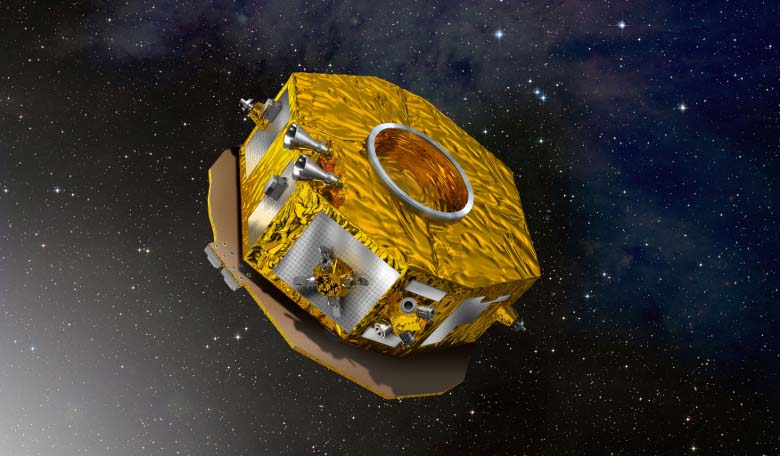In a media conference presented by ESA today, scientists working on the LISA Pathfinder mission announced a green light for the ground-breaking spacecraft, specifying that LISA has fulfilled its scientific objectives as a testbed for future space missions aimed at improving our knowledge of the universe by detecting gravitational waves in space.
In a statement by Stefano Vitale, LISA Pathfinder Primary Investigator he explained, “to capture with one statement of what we have achieved, we have demonstrated that LISA can get its full science performance. We made the acceleration of test-masses due to disturbances much smaller than that expected from gravitational wave signals.”
LISA, short for Laser Interferometer Space Antenna, is a fundamental technology mission aimed at testing the concept of low frequency gravitational wave detection, and it works by acting as a container to house two very dense gold-platinum cubes, that are put in near-perfect gravitational free-fall. As these cubes move in free-fall, the spacecraft measures the relative movement of the two blocks to an accuracy of 10 picometres (1 picometre is equal to one millionth of a millionth of a metre). The spacecraft also acts as a shield, to guard the cubes from any unwanted external interference.
“We shrunk the arm of a large gravitational wave antenna down to something which allows us test the technology. We are showing that we know how to build a large scale gravitational wave detector in the future." said ESA LISA Pathfinder project scientist Paul McNamara at the tele-conference. The LISA Pathfinder spacecraft is not sensitive enough to measure gravitational waves, however, its aim is to ensure that future missions will be able to detect actual gravitational waves by ruling out possible external (and internal) interference. "Now we have to demonstrate that we can actually build a system that is quiet enough and allows us to make the measurement in the future,” continued McNamara.
The process of detecting extremely small movements using sophisticated technologies in gravitational sensors, electric propulsion, and laser ranging is known as ‘precision metrology’ and is crucial for advancing projects of this kind. “The technology of LISA Pathfinder is a key one, necessary for the [impending] gravitational wave observatory. There are other technologies the agency is already developing, that will make us ready to carry out this future mission, which will be an example of European leadership… in a field that is new and novel and highly advanced,” said Fabio Favata, Head of the Coordination Office at ESA.
Gravitational waves are the echoes of cosmic events that happened in the early Universe and therefore they allow scientists to look back at when stars and galaxies first formed. Not only that but these faint ripples in the fabric of space-time allow scientists to essentially measure the gravity of the Universe, hence their importance in not only understanding the history of the Universe, but the nature of the fundamental forces within it.
LISA Pathfinder is stationed at a stable orbit between the Earth and the Sun at a location called the first Lagrange point, at a distance of 1.5 million kilometres away. Launched in December 2015, and with its start of science operations on 1st March 2016, LISA Pathfinder has had a short mission run time leading up to todays announcement. The mission is an international endeavour involving 40 companies and institutes from 14 European countries and the USA and was built by Airbus Defence & Space UK, with on-board software development by SciSys Ltd.











